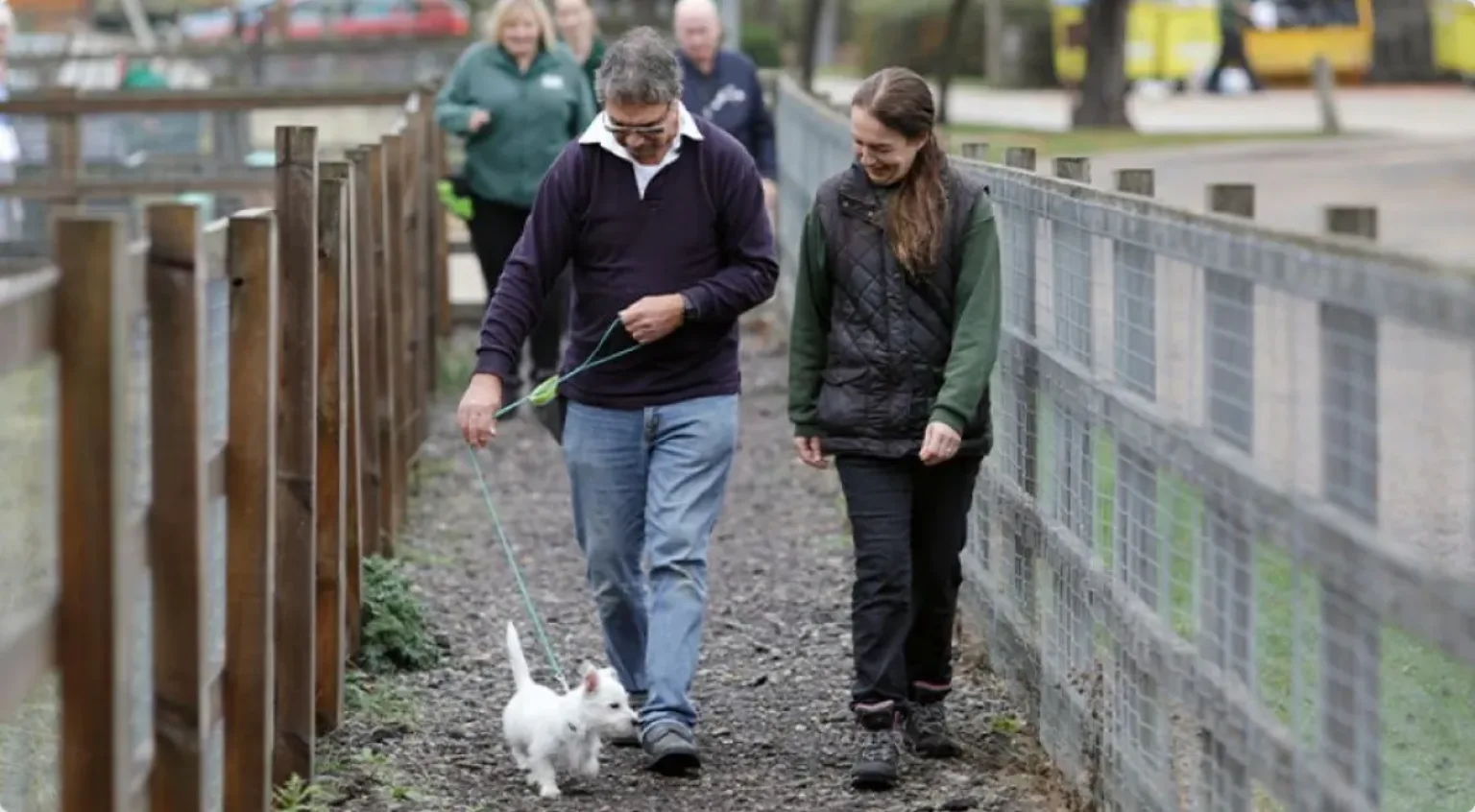Fireworks: how to keep your pets safe
Find out how to recognise fear in your pets and keep them safe and happy.

Not only is it a great way to stimulate your four-legged friend, but it can also calm them down if they’re the lively type!
Dogs are excitable pets, there’s so much going on around them, that it’s easy for them to become distracted by things other than you. This doesn’t make things as easy for you when out and about with your four-legged-friend. Here we look at training tips on how to keep your dog focused on you and overcome distractions.
Do you have a dog who is keen to interact and play with you in the home, but as soon as you go out for a walk his attention to you fades and the only thing keeping your dog with you is the lead? This can be a frustrating experience and it might puzzle you on how to get your dog to pay attention to you rather than other people, dogs, or wildlife. Everything starts with focus, if the dog cannot pay attention to you out on a walk, you are missing the foundation to succeed in all other training such as loose lead walking or recall training. It is your responsibility to keep your dog safe and it is required by law that your dog is under control at all times when out in public which starts with being able to focus on you.
Consider your dog and their breed when it comes to this. All dog breeds have their own characteristics and natural behaviours.
For example, hunting breeds or terriers are likely to have a bigger urge to hunt, so they might be easily distracted by all the smells of wildlife in woodlands.
It’s up to us to learn about our dog’s breed and how to meet their specific needs with appropriate outlets.
You can do this at home by mimicking activities such as tracking (a scent game where a trail is laid out for the dog to track and follow), hunting, or retrieving by hiding treats or toys.
All these things will help stop your dog from getting bored. Enrichment feeders are also a great way of keeping your dog’s brain working.
Good communication starts with consistency and clarity. Associating a word for good behaviour (also called a “marker word”) will tell your dog they’re displaying desired behaviour and they’ll be rewarded with a treat. Two commonly used “marker words” are “good” or “yes”. Try a few sessions of 10-20 second bursts where you say the word and throw a treat.
Once your dog knows a “marker word” you can start working on helping them focus on you with the “check-in” game. This is a great exercise to reassure your dog that it’s okay to check in with you. The more you practise, your dog will expect to continue this exercise, almost like a using a muscle.
Start in the home or the garden, somewhere with little distractions.
Stand or sit with your dog on the lead and allow them to explore a small area they feel comfortable and ensure there is no tension or yanking on the lead.
Throw a treat on the floor and see if your dog checks back in with you, if so, use your “marker word” and throw them another treat.
Keep doing this every time your dog checks in with you, and after a while you’ll see your dog checking in with you promptly and more frequently.
If the dog does not check in with you as frequently, just wait them out until they do. Don’t say anything or prompt them to do so, voluntary behaviours which are rewarded often become more reliable than enticed behaviours. Being patient is the key.
Once you’ve tried this out in different areas of the home and garden, you can practise the check-in game out on walks and gradually expose your dog to more distractions. The goal is not to have your dog always focused on you and ignoring the environment, but able to split their attention between you and things around them without becoming distracted or over-excited.
If your dog isn’t checking in as often on their own, prompt their attention by stepping into or out of the dog’s peripheral vision while scuffing a foot or taking a step away. An occasional prompt is okay as it might be necessary, but if you find it happening more often, you might want to re-evaluate the situation. Try backing away to a greater distance or reduce the amount of distractions.
If you’re looking to speed up the progress, here are a few things you can do:
Dog behaviour and training specialist, Britt, takes us through how to help your dog overcome distractions in our video below. https://www.youtube.com/watch?v=7_ynpS9KaiU
For more dog behavioural advice from our experts, visit Ask Woodgreen today.